This is one in a series of posts on the Fujifilm GFX 100S. You should be able to find all the posts about that camera in the Category List on the right sidebar, below the Articles widget. There’s a drop-down menu there that you can use to get to all the posts in this series; just look for “GFX 100S”.
After I posted this test, I received a few requests to run a similar one comparing the 80 mm f/1.7 against the 45-100 set at 80 mm. The requestors were mainly interested in landscapes, had the 45-100, and were wondering if acquiring the 80/1.7 would be work it.
I used my usual scene (shown here with the both lenses).
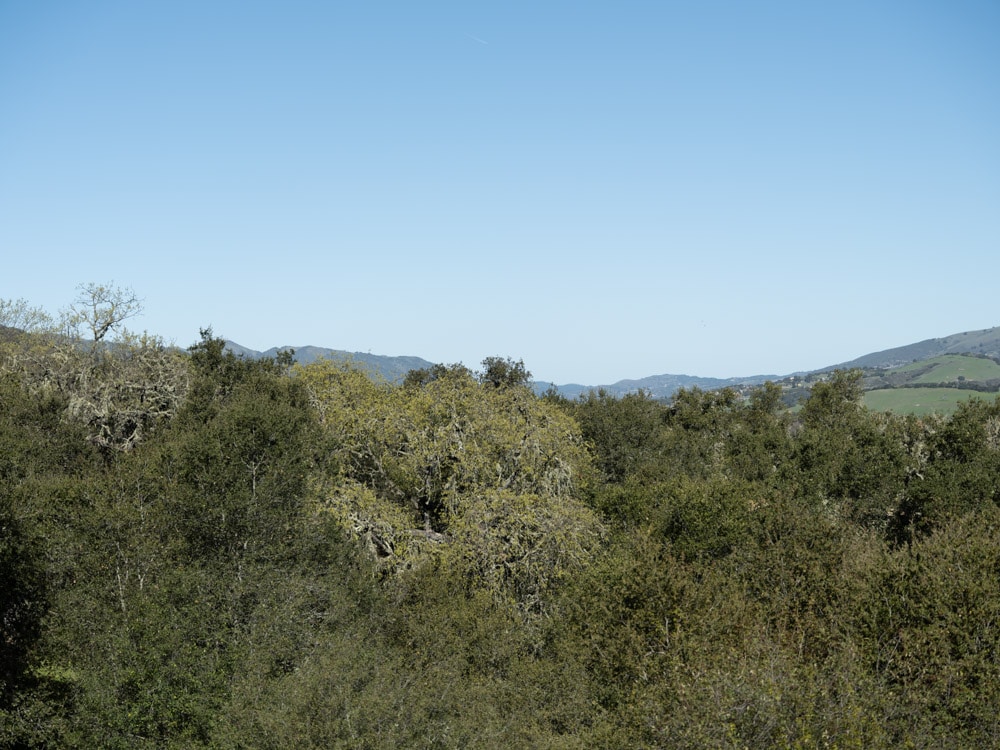
I used the old shots for the 80 mm lens, so that lighting isn’t that same. I don’t think it will make much difference.
I set up the camera as follows:
- RRS 4-series Versa legs
- Arca-Swiss C1
- 2-second self timer
- ES
- ISO 100
- Manual focus at taking aperture for each shot
- f/4, f/5.6, f/8
- 1/800, 1/400, 1/200 second shutter speed for the 80
- 1/1000, 1/500, 1/250 second shutter speed for the 45-100
I developed the images in Lightroom with
- White balance set to Daylight
- Adobe Color Profile
- Sharpening: amount 20, radius 1, detail 0
I picked the sharpest of the three exposures. If you’ve seen these here before, just jump to the images. If not, I need to spend some time telling you how to interpret them. They’re at roughly 250% magnification, enlarged to 700 pixels high on export from Lightroom. If you just want a rough idea of the differences, just look at the images as displayed in-line in the posts. However, if you wish to compare these images in detail, you should view these images by clicking on them to see the source files, then set your browser for 100% zooming. Even better, download them and make Photoshop stacks.
No matter what you do, these crops are all going to look horrible. I’m blowing them up so much so that they will represent the original file after JPEG’s discrete cosine transform has had its way with them. If you want to get a good idea of what the images would look like printed, get far away from your monitor. No, farther than that. Put a bunch of the images up on the screen and back up until the best one starts to look good. Then look at the others. There’s another reason why these images won’t look like the best thing the camera/lens combination can deliver. They’re demosaiced with Lightroom. Lightroom is not awful, but for a particular image, there are usually better raw processors. I use Lr because it’s a de facto standard, because I know it well, and because it’s got good tools for dealing with groups of images.
Here’s how to use these highly-magnified crops. The dimensions of the GFX 100 sensor is 11648×8736 pixels. If we make a full-frame print from the GFX 100 on a printer with 360 pixels per inch native driver-level resolution, like the Epson inkjet printers, we’ll end up with a 32.4×24.3 inch print. The 399×309 pixel crop you’re looking at will end up roughly 1.2×0.8 inches. Let’s imagine that you or your viewers are critical, and will look at the 32×24 inch print from about 24 inches (conventional wisdom is that the distance would be a little greater than that, or 40 inches (the diagonal), but you did buy a high-resolution camera for a reason, didn’t you?).
The next step is dependent on your monitor pitch, which you may or may not know. Turns out, you don’t have to know it. Just take the crops and view then at 1:1. How high are they? Get out your ruler and measure, or just guess. Let’s say they are 6 inches high. 6 inches is about 6 times 0.9, so in order to view the crops the way they’d look from 24 inches on the print is to view them from 6 times as far away, or 12 feet.
In the center, at a distance of about 100 meters:
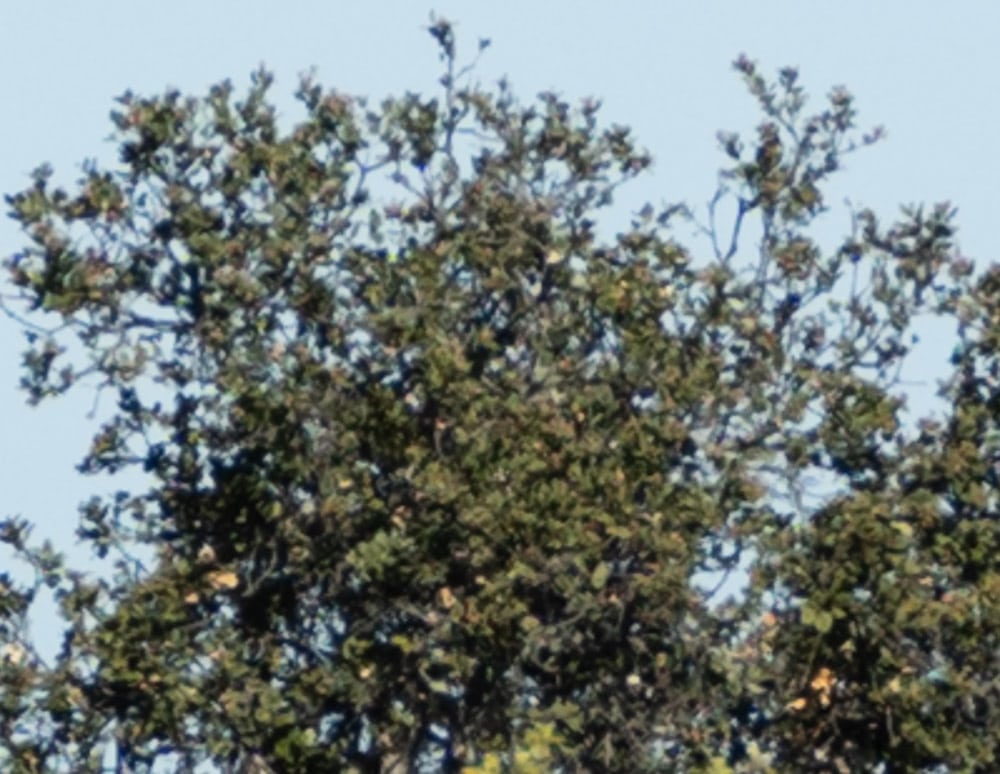
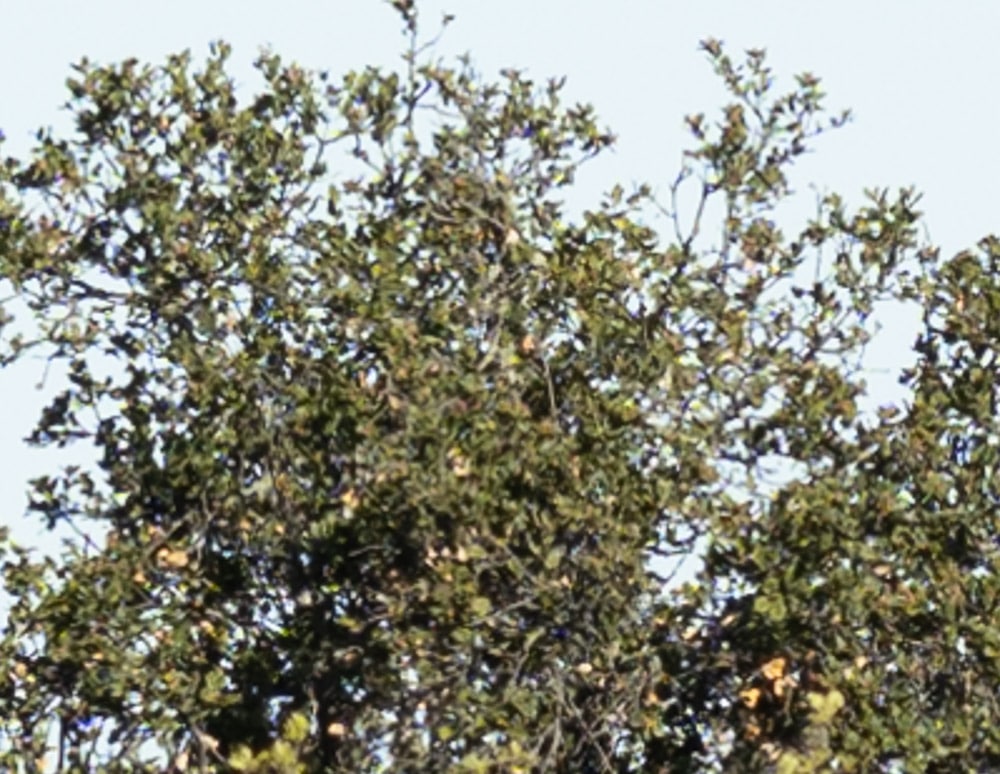
The prime is crisper, and has less blue fringing.
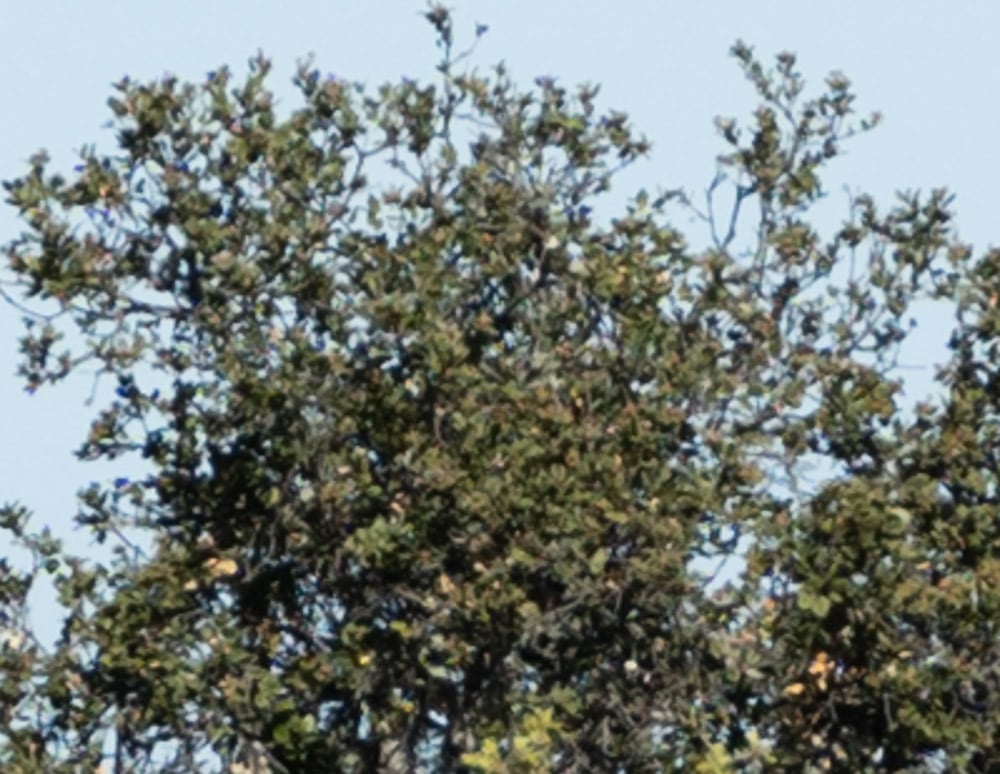
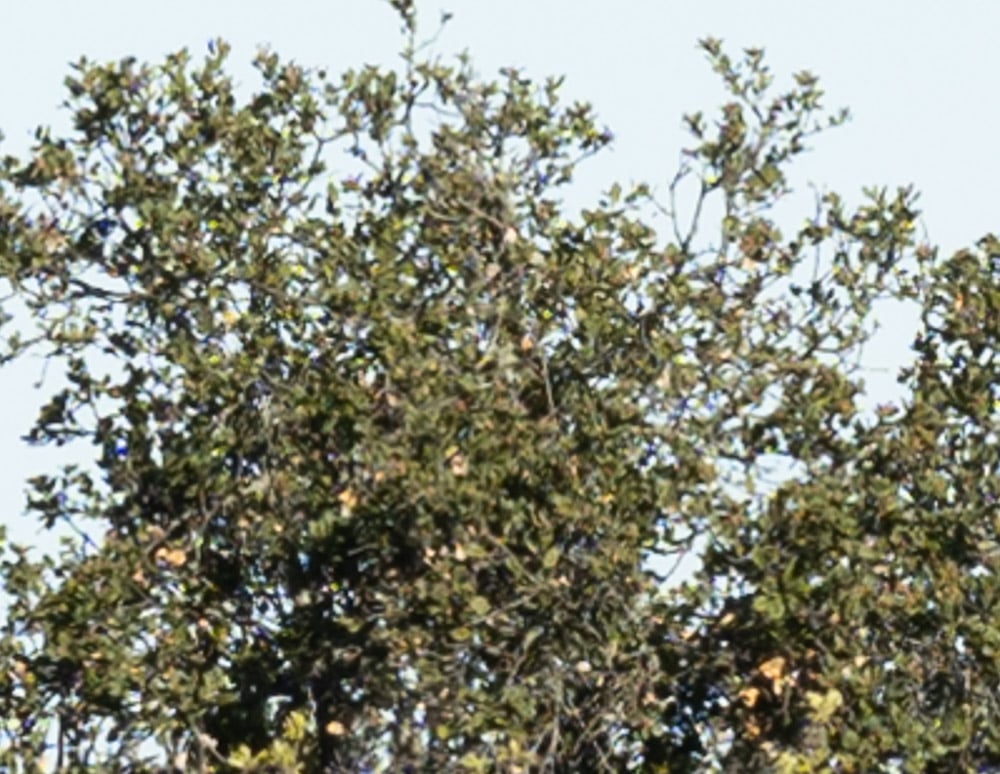
The zoom is getting closer.
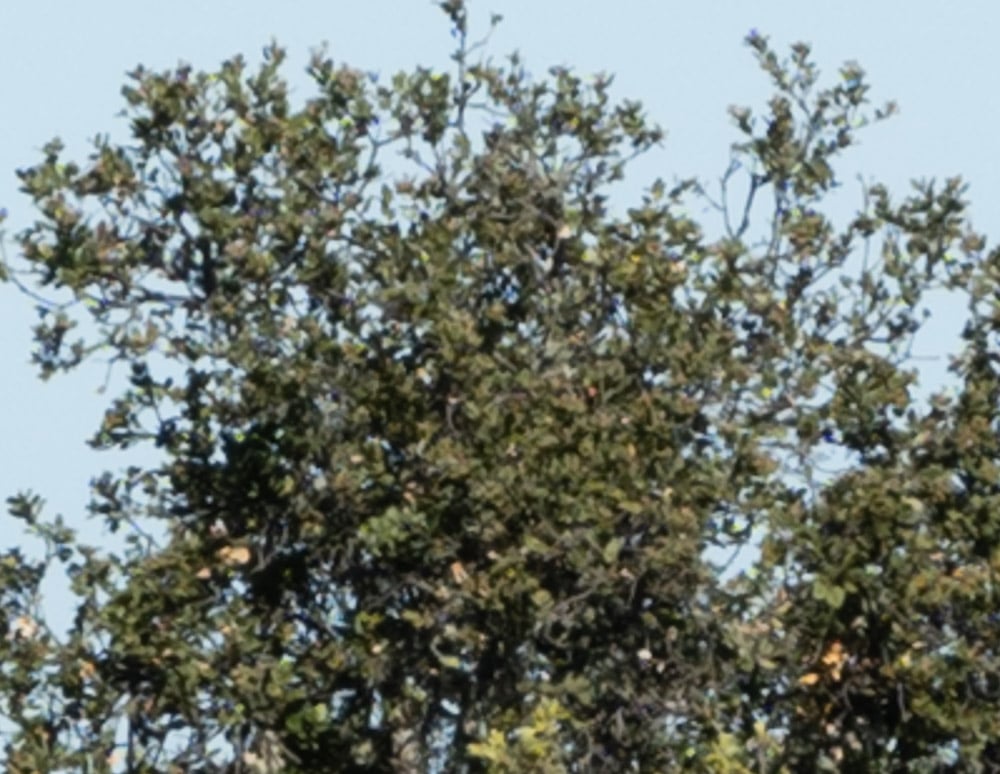
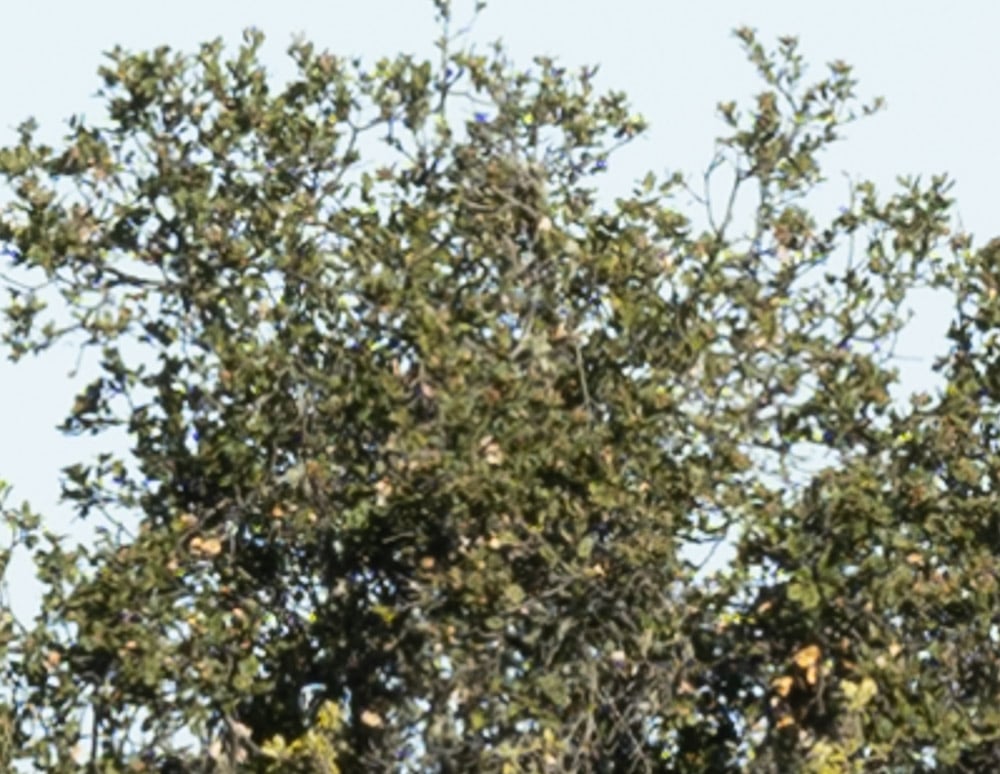
Now they’re just about as sharp, but there is still fringing on the zoom.
In the upper left corner, refocusing for each shot:
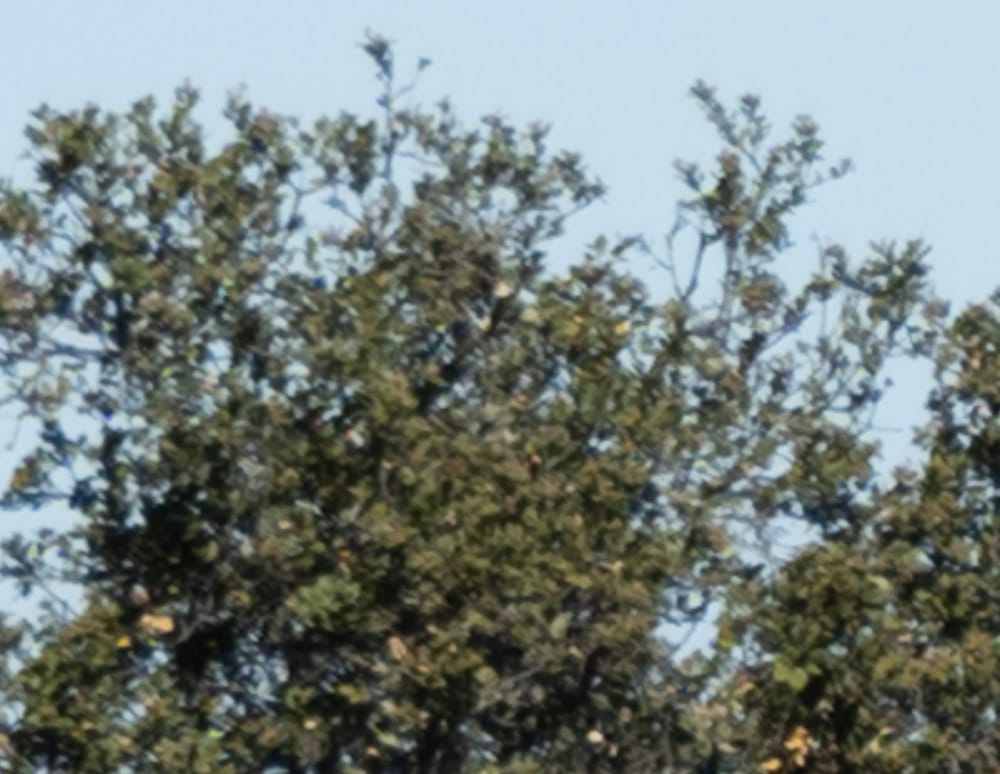
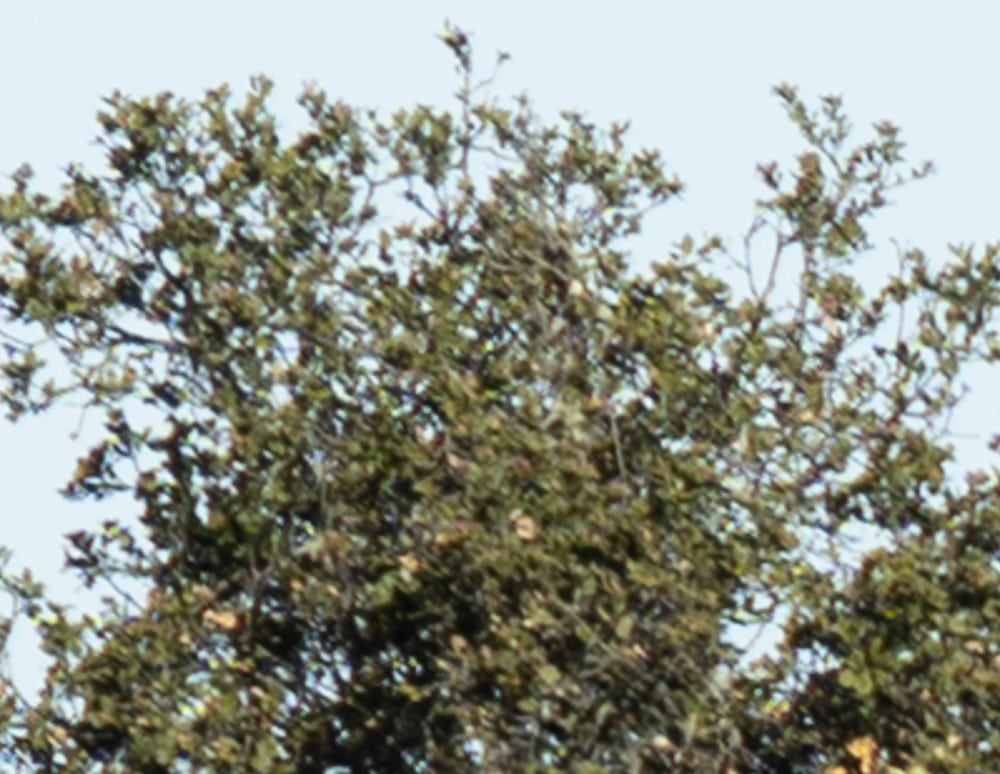
The 80 is sharper.
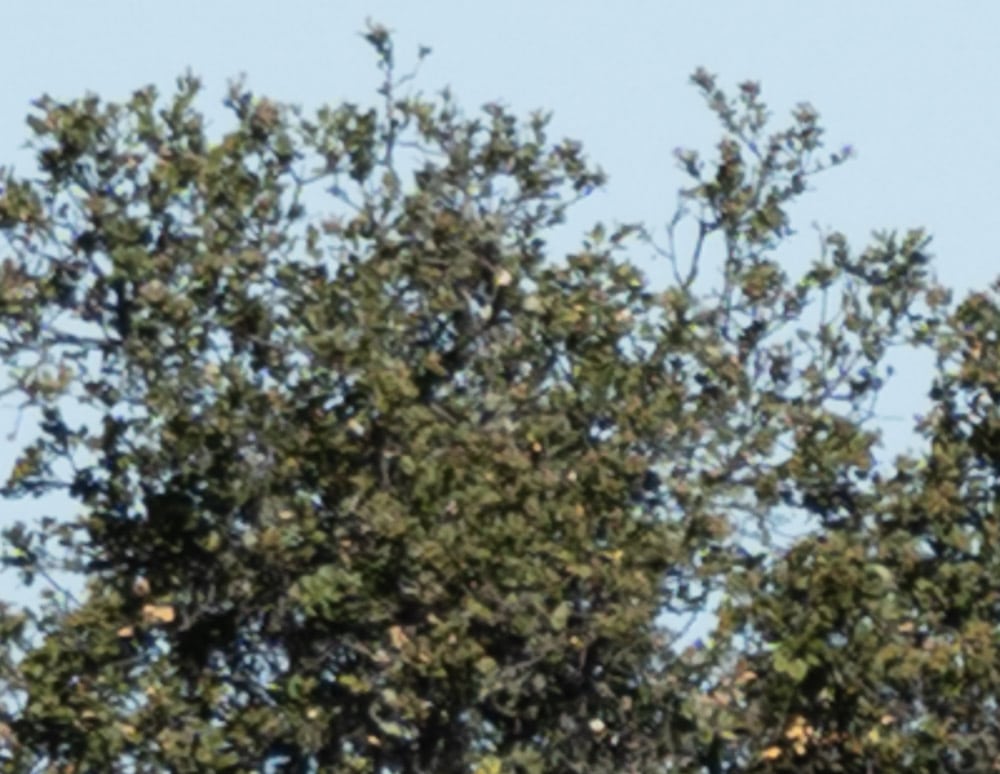
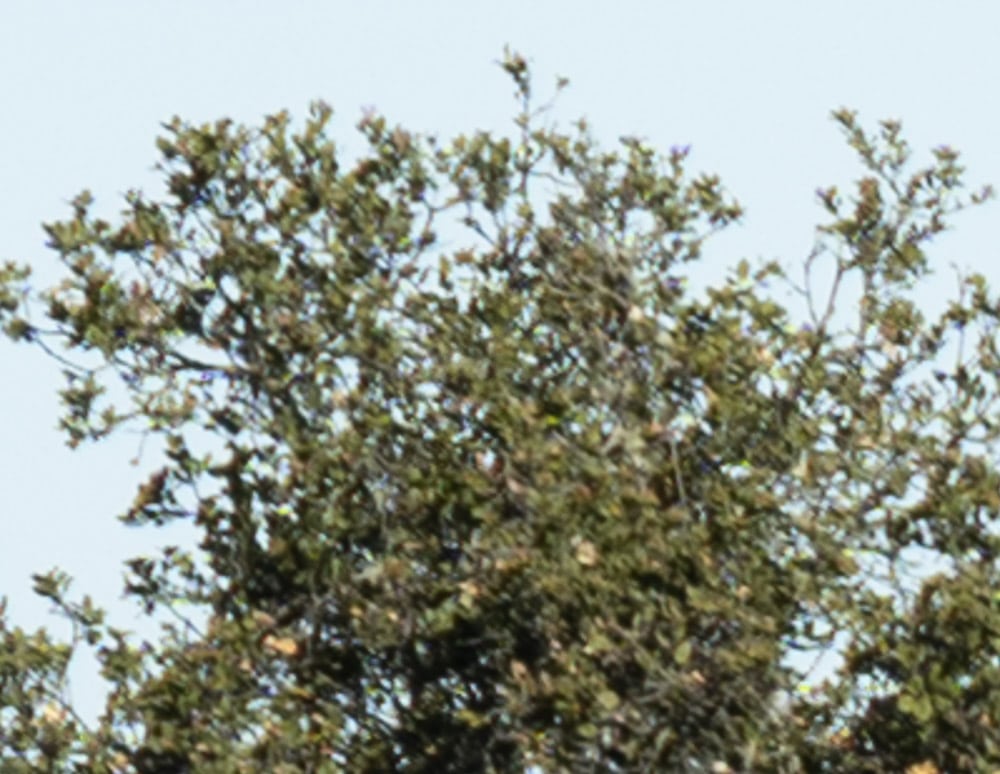
Not too different in sharpness.
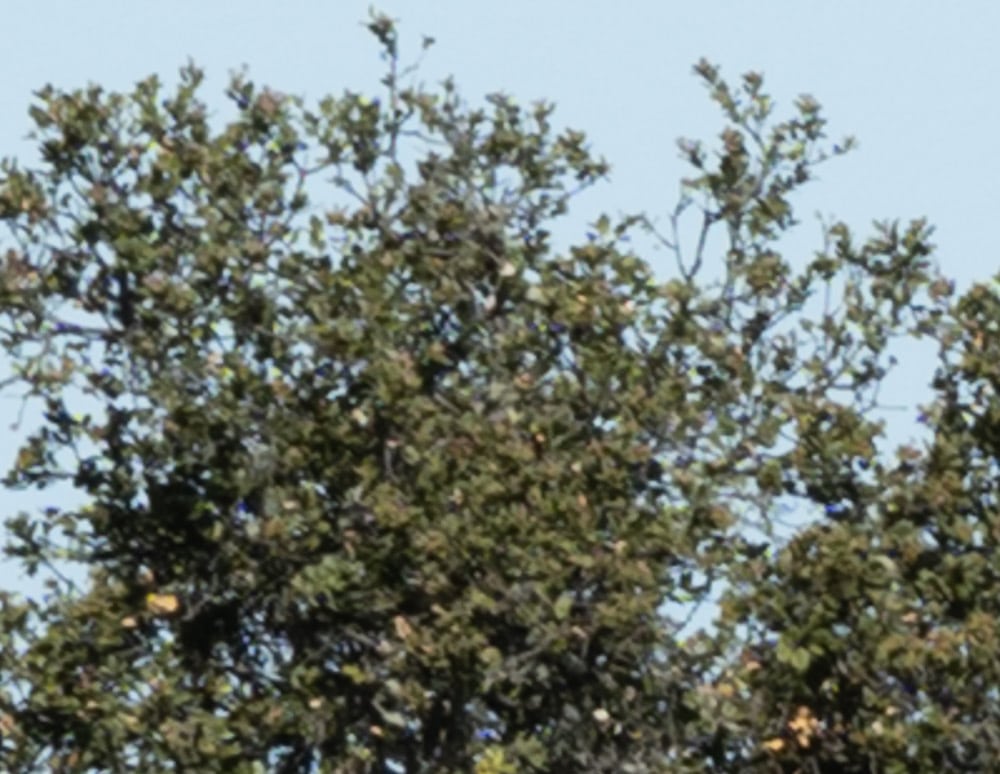
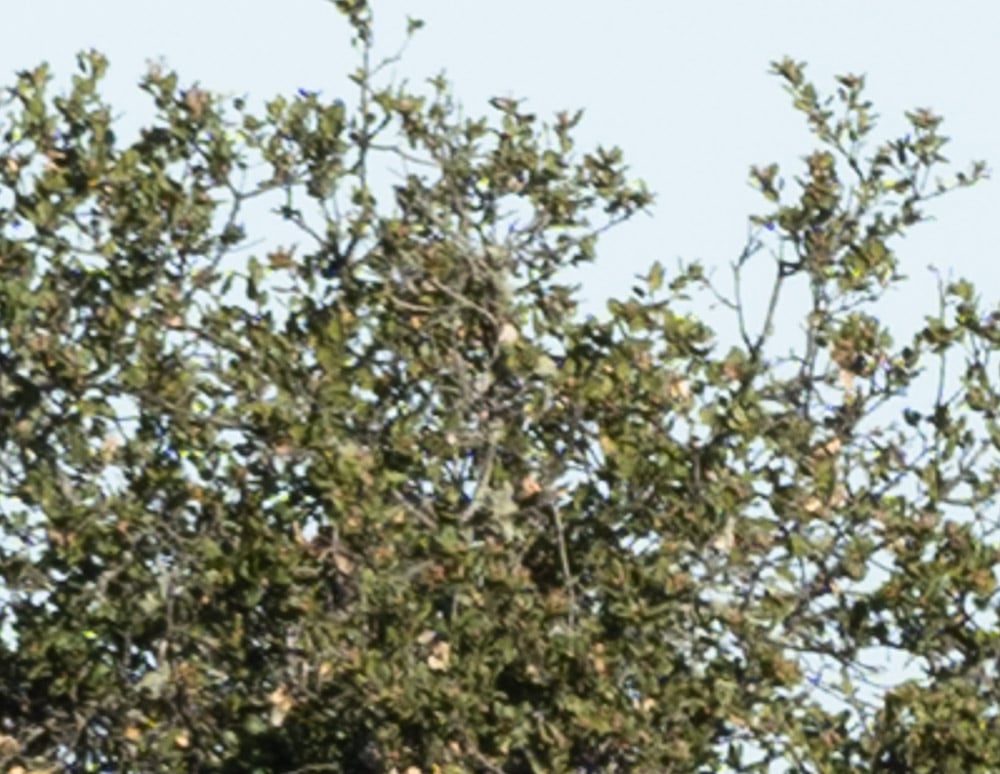
Not all that different in sharpness.
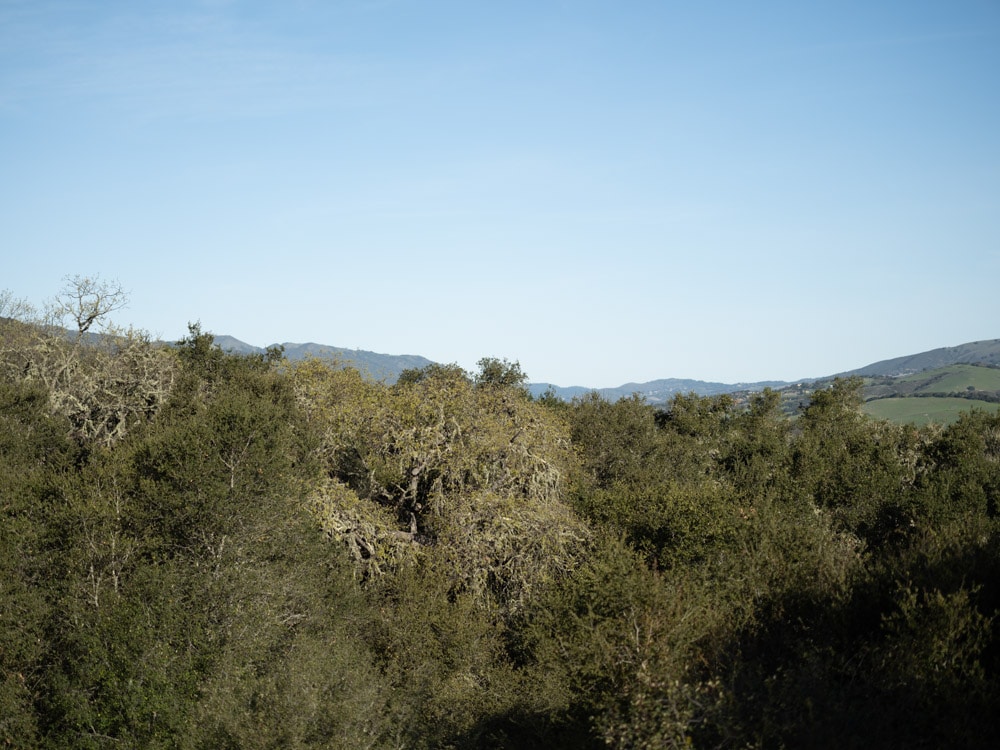
How does the CA of the zoom (@45mm) compare to the GF 45mm lens.
I’ll check.
Thanks for doing this comparison, I would also be interested to see how the 45-100 compared to the 45/2.8
As a landscaper shooter just curious to see if the 45-100 can do the trick when shooting at F8 or are the primes still superior in every way
Hi Jim,
Hope all is going well for you. Have you done a work up on the Fuji GF45-100 vs GF55 1.7 lens? Thanks for all you do.
I’ve not tested the 55/1.7. Sorry.